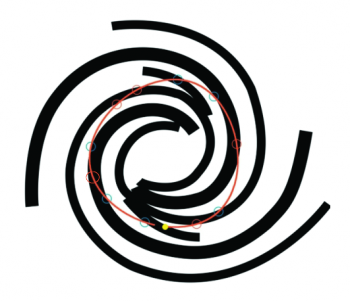Mars Reconnaissance Orbiter spots a new crater on Mars.
Mars Reconnaissance Orbiter spots a new crater on Mars.
The scar appeared at some time between imaging of this location by the orbiter’s Context Camera in July 2010 and again in May 2012. Based on apparent changes between those before-and-after images at lower resolution, researchers used HiRISE to acquire this new image on Nov. 19, 2013. The impact that excavated this crater threw some material as far as 9.3 miles (15 kilometers).
Mars Reconnaissance Orbiter spots a new crater on Mars.
The scar appeared at some time between imaging of this location by the orbiter’s Context Camera in July 2010 and again in May 2012. Based on apparent changes between those before-and-after images at lower resolution, researchers used HiRISE to acquire this new image on Nov. 19, 2013. The impact that excavated this crater threw some material as far as 9.3 miles (15 kilometers).

